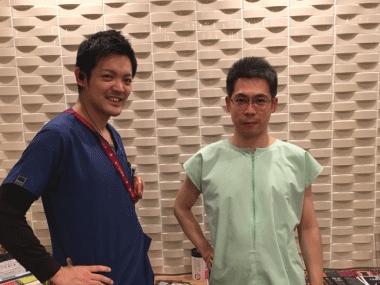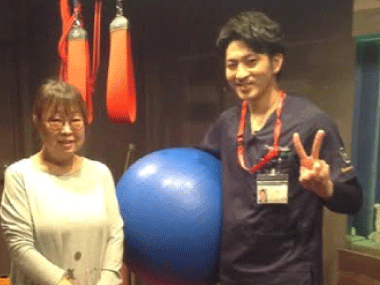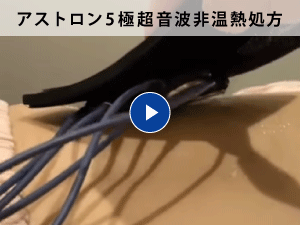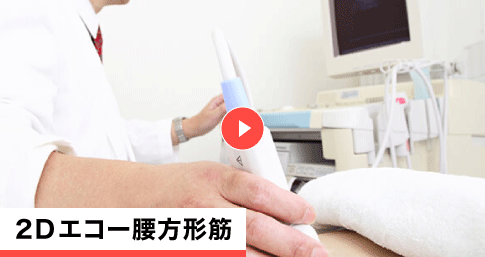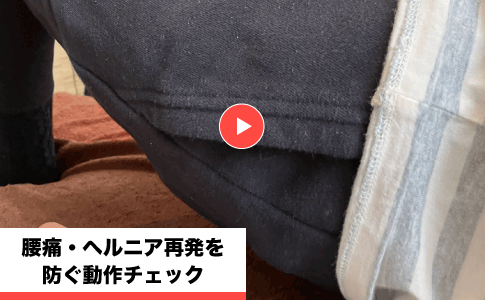Acute Lower Back Pain Program
What is Acute Low Back Pain?
Acute low back pain is a type of back pain that suddenly occurs, with a representative example being a “strained back” or “lumbago.” Acute low back pain can occur when lifting a heavy object or suddenly twisting the waist. The lower back is unable to withstand the movement or load, leading to pain due to some form of dysfunction. Although acute low back pain involves pain in the lower back, the specific area affected and the underlying cause vary depending on the individual and the case.
Commonly affected areas in acute low back pain include the lumbar vertebrae, back muscles, and fascia. In some cases, multiple areas may be affected simultaneously. The primary treatment is rest.
Among back pains, those that appear suddenly and have just started are collectively referred to as acute low back pain.
Depending on the phase, it is classified into “acute, subacute, and chronic” stages.

Generally, the period of intense pain and inflammation in the acute phase is considered to be 72 hours (3 days), but symptoms do not necessarily disappear immediately afterward.
Main Symptoms
Severe pain occurs in the lower back, making it difficult to bend forward or backward. In severe cases, the pain may be so intense that movement becomes impossible. There may also be radiating pain or numbness extending to the buttocks or lower limbs. While resting can alleviate the pain, excessive restriction of movement can lead to muscle weakening, which may worsen the back pain.
Symptoms can occur not only when trying to lift a heavy object but also when getting up, coughing, or sneezing. Unlike the typical “strained back,” cases caused by infections or tumors may present with additional symptoms such as fever or pain in areas other than the lower back.
Main Causes
The causes of acute low back pain vary, and in some cases, the exact cause may not be clear. Common causes include aging, poor posture, misalignment of spinal joints due to excessive force, damage to the intervertebral discs (the cartilage of the lower back), and injuries to the muscles, tendons, or ligaments that support the lower back.
Individuals with knee problems are particularly prone to developing acute low back pain as they tend to compensate for their knees by performing movements while standing, which increases the risk. However, in many cases, the exact cause remains unknown.
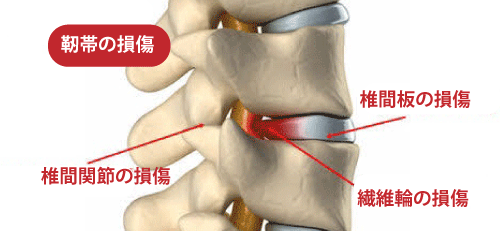
General Treatment Methods
Acute low back pain can sometimes heal naturally within a few days to a few weeks with sufficient rest.
Conservative treatments include:
1. Rest
2. Medication (anti-inflammatory and pain relief drugs)
Unique Interventions by Medical Japan
At our clinic, we provide not only localized treatments such as massage and acupuncture but also a comprehensive review of posture, lifestyle habits, and environmental factors under gravity.
For long-term prevention of recurrence, we conduct specialized analyses of posture and walking patterns, incorporate various approaches such as home exercises and Pilates, and offer programs to build a stronger body.
Depending on the case, both surgical treatments (invasive procedures to eliminate pain) and conservative treatments (non-surgical recovery) are options. Here, we will focus on the conservative treatment methods we offer.
Acute Low Back Pain Case
- 01. Pre-treatment (bulging of the left back muscles)
- 02. Confirmation of muscle fiber condition using 2D ultrasound
- 03. Start of treatment
- 04. Post-treatment (improvement in muscle tension and bulging symmetry)
- 05. Initiation of rehabilitation exercises
01. Before Treatment (Left Back Muscle Swelling)

02. Checking Muscle Fiber Condition with 2D Echo
| Affected Side: Left Erector Spinae | Healthy Side: Right Erector Spinae | Evaluation Echo |
 |
 |
|
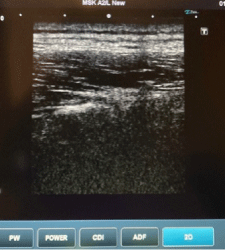 Muscle Fibers Uneven |
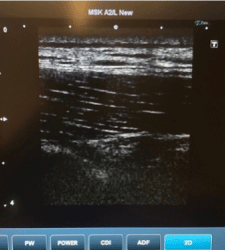 Muscle Fibers Even |
03. Start of Treatment
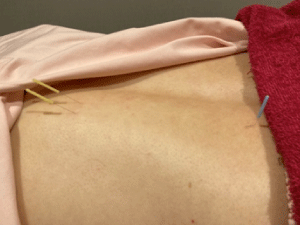 |
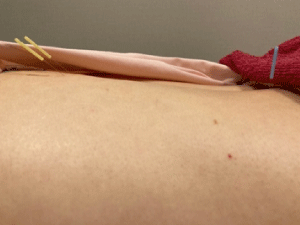 |
|
| Astron (5 poles) Ultrasound – Non-thermal Mode | Acupuncture treatment aimed at reducing muscle tension in the affected (left) erector spinae | |
04. After Treatment (Improved Muscle Tension and Swelling Difference)
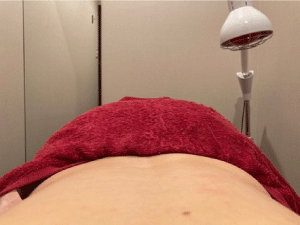
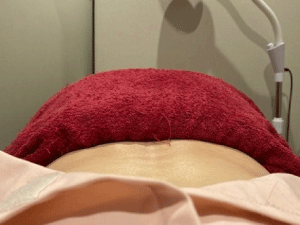
05. Rehabilitation Exercises Begin
Muscular Lower Back Pain (Acupuncture Intervention Method)


Treatment Method: Subcutaneous 3cm Deep Paraspinal Acupuncture
By improving blood circulation in muscles that compress blood vessels, this treatment helps reduce back fatigue, increases flexibility, and makes breathing easier. When the longest muscle (longissimus) remains flexible, spinal and rib movements become smoother. As a result, taking deep breaths becomes easier, leading to more comfortable breathing.
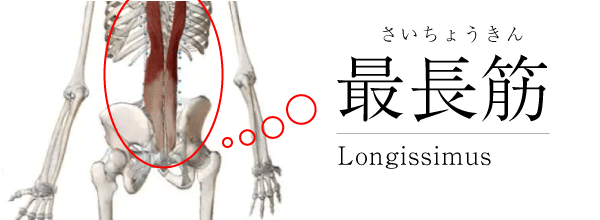
The primary role of the longissimus muscle is to protect the spinal nerves and support the spine. Additionally, it works in conjunction with other erector spinae muscles, such as the iliocostalis and spinalis muscles, to maintain core stability and assist with extending the back, lateral bending, and torso rotation.
Our innovative “Ultrasound Acupuncture” is an exclusive, groundbreaking treatment method for the conservative management of herniated discs.
Intervention Example 1: “Ultrasound Acupuncture”
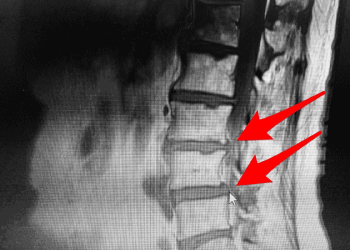
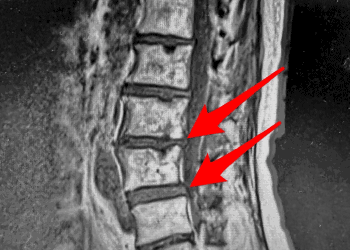
MRI scans are performed at affiliated medical institutions. By understanding the patient’s condition, the accuracy and effectiveness of medical treatment can be improved.
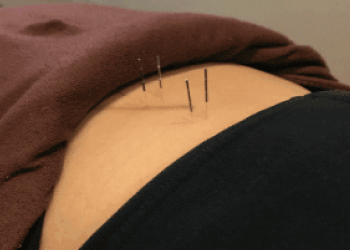
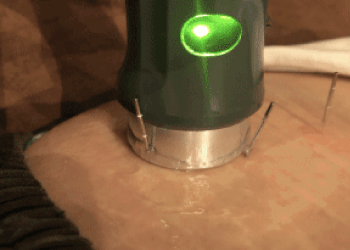
Ultrasound → Deep heat increases blood flow to the spinal artery and arterial plexus.
Intervention example 2: Ultrasonic acupuncture
The affected area is photographed with an ultrasound. The quadratus lumborum muscles on both the healthy and affected sides are photographed with an ultrasound to check for evenness or inequality in muscle arrangement. The patient is asked to move and the difference in muscle movement is confirmed.
By understanding the affected area, the accuracy and effectiveness of medical treatment can be improved.
Acupuncture is performed at pinpoints where the muscles shown with an ultrasound have poor gliding.
Furthermore, a physical therapy device that combines a high-frequency therapy device and an ultrasound therapy device (Astron) is used, and the high frequency can be expected to relieve muscle tension and suppress the transmission of pain.
“High-frequency therapy + ultrasound therapy”

Ultrasound + high frequency treatment for hernias at high L3/4 and high L4/5
High frequency → pain relief by conduction block effect
For patients who visit our clinic, NRS10 will improve to 3.4 in three weeks at a pace of twice a week. We also aim for zero recurrence by carrying out rehabilitation exercises that take into account the individual’s muscle and skeletal balance.
Movement check to prevent recurrence of lower back pain and hernias
We check your posture and how you use your body properly, and perform movement checks to reduce the burden on your daily life and prevent recurrence.
AI posture analysis system
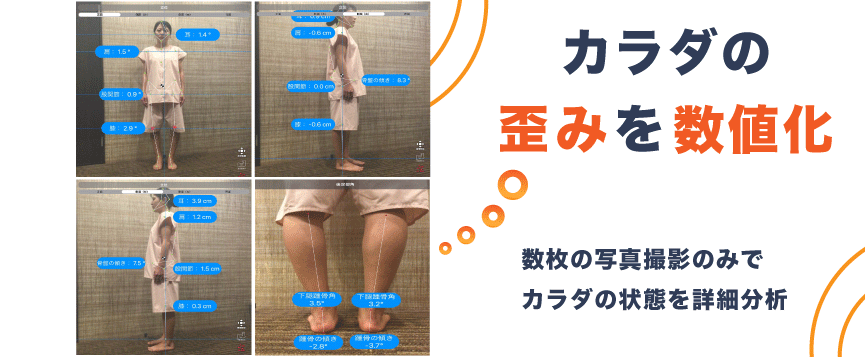
From the current posture, we can estimate areas where muscles are stiff, areas that cause pain, future posture, etc., and explain the treatment plan and effects more clearly. It has become easier for patients to understand their own physical condition.
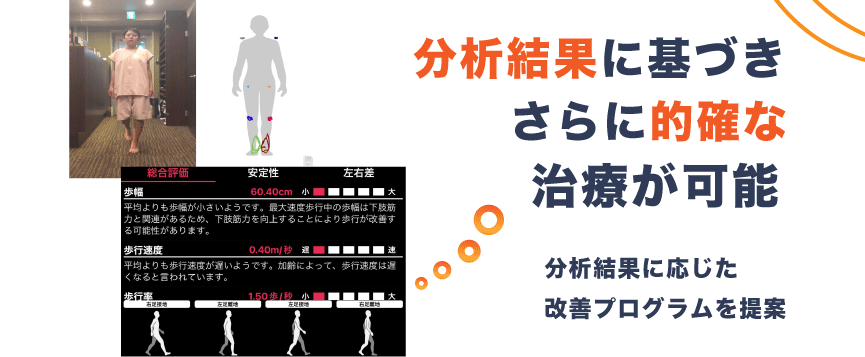
Myopressure (gait diagnostic device)
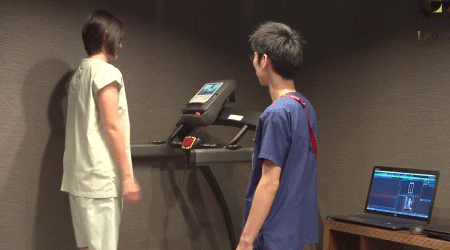
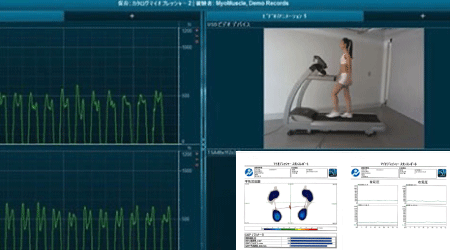
When you walk on a treadmill equipped with approximately 20,000 movable sensors, you can see your foot pressure, center of gravity shift, and left and right load values. In addition, by using two cameras, you can visually check your walking posture.
By undergoing a gait diagnosis, you can learn the balance of your walking style and walk correctly. When your walking style is improved, unnecessary body movements are reduced and parts of the body that were not used correctly can be used, allowing you to move naturally and reducing the burden on your body. It also improves various physical symptoms caused by poor walking balance.
After a year and a half of rehabilitation, there has been such a change!!
Insoles and shoe prescriptions

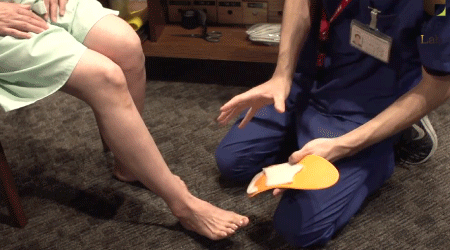
Based on the results measured by the MyoPressure (gait analysis machine), we are able to create insoles that are better suited to your body. By examining the imbalance in your center of gravity or deviations in your foot trajectory during walking, you can visually confirm these issues, leading to more accurate adjustments and allowing you to walk using the entire surface of your foot correctly.
By using insoles that fit your body, the natural function of your feet is enhanced. The arch of your foot is properly supported, making it easier to apply the correct center of gravity. This results in improved performance, increased endurance, reduced fatigue, and reduced stress on muscles and the body, making walking more comfortable in everyday life.
[Realign Core] [Realign Balance Shoes]
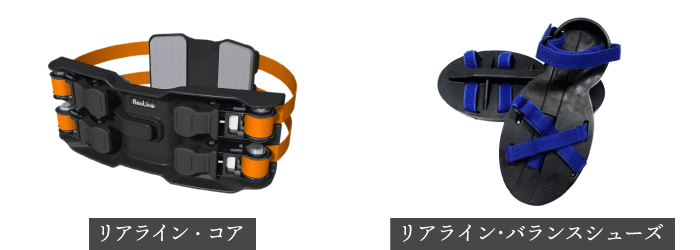
The Realign Core is an exercise aid designed to correct misalignments in the pelvis and ribcage, which form the core of the body. When there is “misalignment (asymmetry)” in the pelvis and ribcage, it can negatively affect not only the spine as a whole but also the movement functions of the shoulders, neck, and hips.
First, it is important to avoid activities that may cause strain on the lower back, such as “working in a bent position” or “lifting heavy objects,” to minimize the load on the lower back. Additionally, it is necessary to not only avoid straining the lower back but also to strengthen and increase the flexibility of the muscles surrounding the lower back. Especially during the treatment period, it is essential to strengthen these muscles within a range that does not worsen the condition.
Specifically, strengthening the flexibility of the core rotational muscles, gluteal muscles, and adductors, as well as strengthening the inner muscles (multifidus, transverse abdominis, pelvic floor muscles) to engage the intra-abdominal pressure, are key factors.
Recommendation from the Doctor
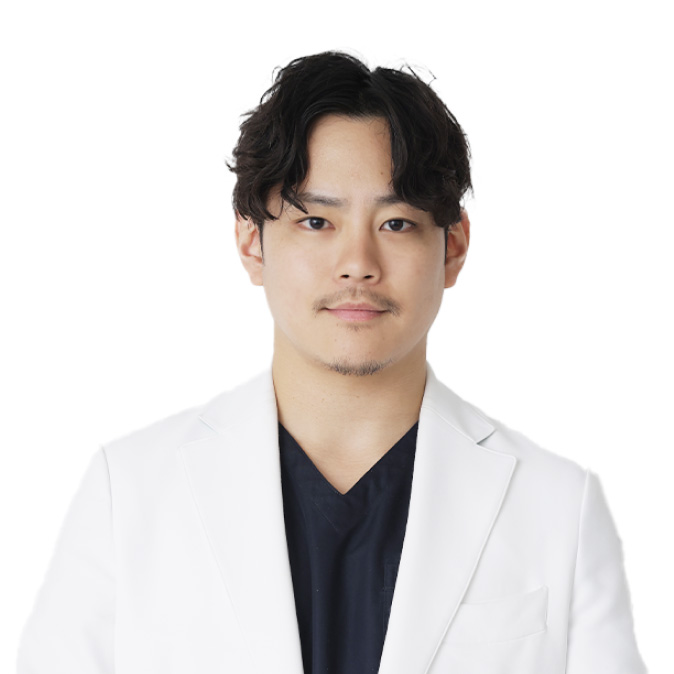

Career & Achievements
・Graduated from the Department of Applied Physics, Faculty of Engineering, Kyoto University
・Completed Special Training at Harvard Medical School
・Graduated from Nara Medical University
・Specialized in Plastic Surgery, Dermatology, Orthopedics
I am Ryohei Tsuchida, the Director of Tokyo Bisen Clinic Shibuya. At our clinic, we specialize in orthopedic care, offering a wide range of treatments for musculoskeletal conditions. We are fully equipped with an X-ray room for highly accurate diagnosis.
While we handle a wide variety of musculoskeletal symptoms, I strongly recommend the treatments offered at Medical Japan, as they are reliable and effective.
For example:
Acupuncture and Chiropractic to Address Pain and Numbness at the Root
We focus on fundamental improvements in pain and numbness caused by conditions like shoulder stiffness, back pain, arthritis, myofascial pain, and neuralgia, aiming for long-term recovery.
Rehabilitation and Preventative Analysis
We create personalized rehabilitation plans based on detailed assessments, helping to prevent recurrence of knee or shoulder joint issues and chronic back pain.
Strengthening Training for the Body
After recovery, we focus on strengthening the body to prevent reoccurrence of issues, sports injuries, and muscle weakness.
Medical Japan offers comprehensive, evidence-based health support, and I highly recommend their treatments for anyone struggling with musculoskeletal problems like shoulder stiffness, back pain, arthritis, myofascial pain, or sports injuries.
References
Patient Testimonials
